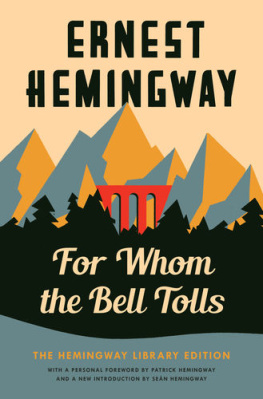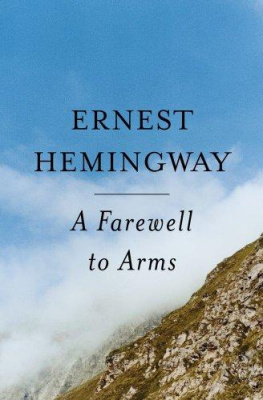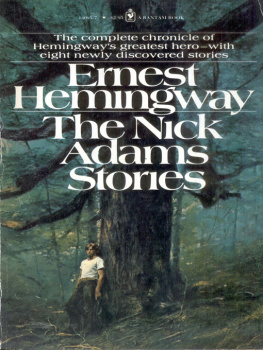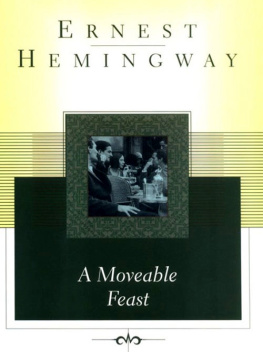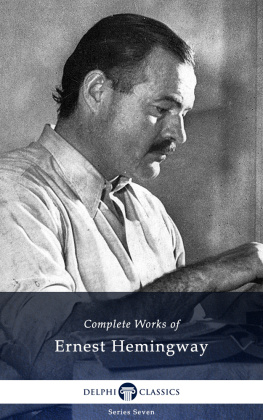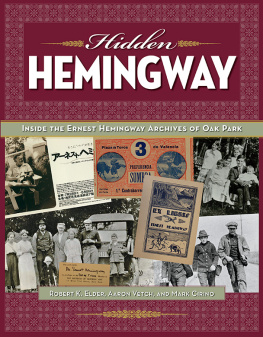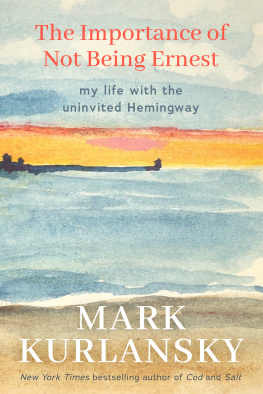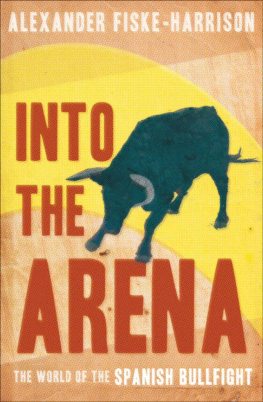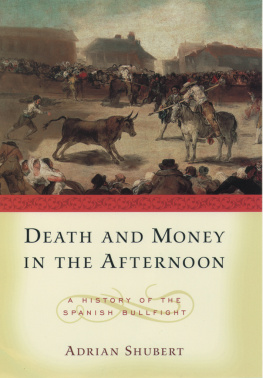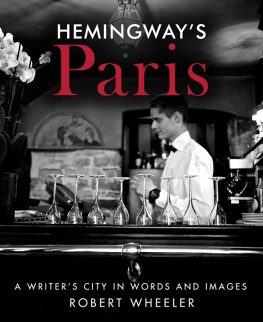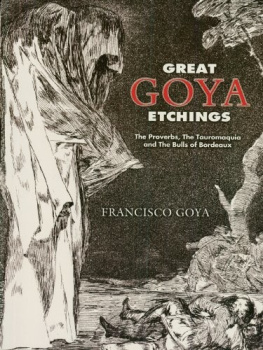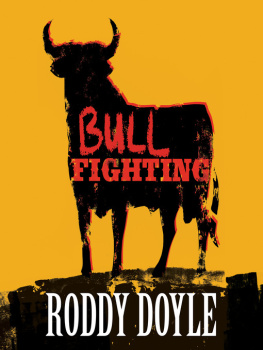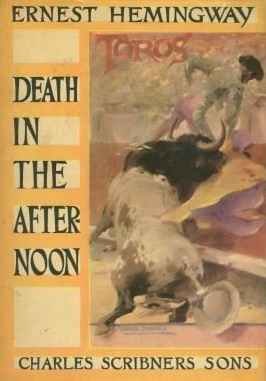Death in the Afternoon is a non-fiction book by Ernest Hemingway about the ceremony and traditions of Spanish bullfighting. It was originally published in 1932. The book provides a look at the history and what Hemingway considers the magnificence of bullfighting, while also being a deeper contemplation on the nature of fear and courage.
Any discussion concerning bullfighting would be incomplete without some mention of the controversy surrounding it. Toward that end Hemingway commented, "anything capable of arousing passion in its favor will surely raise as much passion against it."
CHAPTER ONE
At the first bullfight I ever went to I expected to be horrified and perhaps sickened by what I had been told would happen to the horses. Everything I had read about the bull ring insisted on that point; most people who wrote of it condemned bullfighting outright as a stupid brutal business, but even those that spoke well of it as an exhibition of skill and as a spectacle deplored the use of the horses and were apologetic about the whole thing. The killing of the horses in the ring was considered indefensible. I suppose, from a modern moral point of view, that is, a Christian point of view, the whole bullfight is indefensible; there is certainly much cruelty, there is always danger, either sought or unlooked for, and there is always death, and I should not try to defend it now, only to tell honestly the things I have found true about it. To do this I must be altogether frank, or try to be, and if those who read this decide with disgust that it is written by some one who lacks their, the readers', fineness of feeling I can only plead that this may be true. But whoever reads this can only truly make such a judgment when he, or she, has seen the things that are spoken of and knows truly what their reactions to them would be.
Once I remember Gertrude Stein talking of bullfights spoke of her admiration for Joselito and showed me some pictures of him in the ring and of herself and Alice Toklas sitting in the first row of the wooden barreras at the bull ring at Valencia with Joselito and his brother Gallo below, and I had just come from the Near East, where the Greeks broke the legs of their baggage and transport animals and drove and shoved them off the quay into the shallow water when they abandoned the city of Smyrna, and I remember saying that I did not like the bullfights because of the poor horses. I was trying to write then and I found the greatest difficulty, aside from knowing truly what you really felt, rather than what you were supposed to feel, and had been taught to feel, was to put down what really happened in action; what the actual things were which produced the emotion that you experienced. In writing for a newspaper you told what happened and, with one trick and another, you communicated the emotion aided by the element of timeliness which gives a certain emotion to any account of something that has happened on that day; but the real thing, the sequence of motion and fact which made the emotion and which would be as valid in a year or in ten years or, with luck and if you stated it purely enough, always, was beyond me and I was working very hard to try to get it. The only place where you could see life and death, i.e., violent death now that the wars were over, was in the bull ring and I wanted very much to go to Spain where I could study it. I was trying to learn to write, commencing with the simplest things, and one of the simplest things of all and the most fundamental is violent death. It has none of the complications of death by disease, or so-called natural death, or the death of a friend or some one you have loved or have hated, but it is death nevertheless, one of the subjects that a man may write of. I had read many books in which, when the author tried to convey it, he only produced a blur, and I decided that this was because either the author had never seen it clearly or at the moment of it, he had physically or mentally shut his eyes, as one might do if he saw a child that he could not possibly reach or aid, about to be struck by a train. In such a case I suppose he would probably be justified in shutting his eyes as the mere fact of the child being about to be struck by the train was all that he could convey, the actual striking would be an anti-climax, so that the moment before striking might be as far as he could represent. But in the case of an execution by a firing squad, or a hanging, this is not true, and if these very simple things were to be made permanent, as, say, Goya tried to make them in Los Desastros de la Guerra, it could not be done with any shutting of the eyes. I had seen certain things, certain simple things of this sort that I remembered, but through taking part in them, or, in other cases, having to write of them immediately after and consequently noticing the things I needed for instant recording, I had never been able to study them as a man might, for instance, study the death of his father or the hanging of some one, say, that he did not know and would not have to write of immediately after for the first edition of an afternoon newspaper.
So I went to Spain to see bullfights and to try to write about them for myself. I thought they would be simple and barbarous and cruel and that I would not like them, but that I would see certain definite action which would give me the feeling of life and death that I was working for. I found the definite action; but the bullfight was so far from simple and I liked it so much that it was much too complicated for my then equipment for writing to deal with and, aside from four very short sketches, I was not able to write anything about it for five years and I wish I would have waited ten. However, if I had waited long enough I probably never would have written anything at all since there is a tendency when you really begin to learn something about a thing not to want to write about it but rather to keep on learning about it always and at no time, unless you are very egotistical, which, of course, accounts for many books, will you be able to say: now I know all about this and will write about it. Certainly I do not say that now; every year I know there is more to learn, but I know some things which may be interesting now, and I may be away from the bullfights for a long time and I might as well write what I know about them now. Also it might be good to have a book about bullfighting in English and a serious book on such an unmoral subject may have some value.
So far, about morals, I know only that what is moral is what you feel good after and what is immoral is what you feel bad after and judged by these moral standards, which I do not defend, the bullfight is very moral to me because I feel very fine while it is going on and have a feeling of life and death and mortality and immortality, and after it is over I feel very sad but very fine. Also, I do not mind the horses; not in principle, but in fact I do not mind them. I was very surprised at this since I cannot see a horse down in the street without having it make me feel a necessity for helping the horse, and I have spread sacking, unbuckled harness and dodged shod hoofs many times and will again if they have horses on city streets in wet and icy weather, but in the bull ring I do not feel any horror or disgust whatever at what happens to the horses. I have taken many people, both men and women, to bullfights and have seen their reactions to the death and goring of horses in the ring and their reactions are quite unpredictable. Women that I felt sure would enjoy the bullfights with the exception of the goring of the horses were quite unaffected by it; I mean really unaffected, that is, something that they disapproved of and that they expected would horrify and disgust them did not disgust them or horrify them at all. Other people, both men and women, were so affected that they were made physically ill. I will go into the way some of these people acted in detail later but let me say now that there was no difference, or line of difference, so that these people could be divided by any standard of civilization or experience into those that were affected and those that were not affected.


